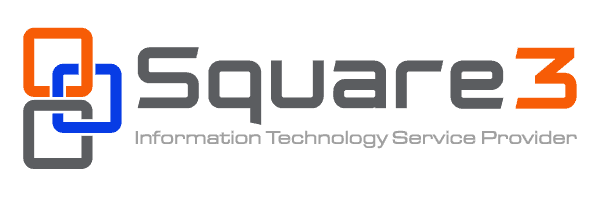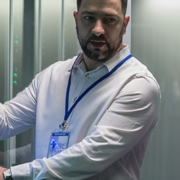Your go-to guide for cybersecurity training
Cybersecurity is a matter of utmost importance that deeply affects businesses across the world. Executives want to ensure that they’re taking the proper steps to protect their data and stay out of the data breach limelight.
After all, the last thing they want is to end up like Equifax, which leaked 143 million Americans’ information.
In truth, it’s essential for everyone, on every level, to understand at least the basics of cybersecurity. Especially its general aspects and potential daily risks. On a greater level, your entire organization must be protected, and all team members must work together toward a united goal of a well-protected enterprise organization.
Even a single data breach can devastate a company. The average total cost of a data breach in 2020 is estimated at $3.86 million.
Below are the most critical aspects of cybersecurity for business which you should always be aware of, and the practical ways to handle these issues.
Create and implement the framework for cybersecurity
The first step to ensuring cybersecurity is to have a working plan in place. You must adjust your plan to address your organization’s weaknesses, strengths, and any other specific needs. It should be a framework that all executives are aware of and know how to implement.
Though executives are essential, you must ensure that employees on every level understand the potential threats. Start by holding regularly scheduled security training seminars to cover what’s new in the world of cybersecurity.
Remember, the best security doesn’t hinge on getting the best security systems. It relies on a combination of a solid plan, good security assets, and ample training.
Risk assessment from an outside perspective
Have your IT team identify risks from a hacker’s perspective. Developing a working strategy to prevent cyberattacks means looking for loopholes and weak spots that you wouldn’t normally consider outright threats.
Remember, this isn’t something your average IT person can do. If necessary, you’ll want to hire a team of security experts to do the heavy lifting for you.
This team will look for ways that your IT infrastructure could potentially be breached. They’ll also help you develop a plan to follow should you have an attack. Only by identifying each risk, making a plan, and effectively training those responsible can you be adequately covered in your cybersecurity strategy.
Again, this means taking a proactive approach to planning. Train your people to be prepared for security risks so they can stop them before there’s a chance of data loss and cybercrime.
Educate every team member
We briefly mentioned employee education earlier. But what does that actually entail?
Consider holding workshops with a cybersecurity professional to educate and inform each person.
Here are the top security issues they should know:
Hacking
As we know, this type of cybercrime can cause substantial financial damage to any company. In simple terms, hacking is when someone accesses information without permission, either directly or remotely.
In most enterprise-level cases, hackers target unsecured website accounts and passwords to get access. Once they access your accounts, they have their hands on all your data. A hacker can then manipulate your data – either they’ll destroy it, sell it, or hold it for ransom.
Hacking is a broad term for a variety of different attacks. Nevertheless, the best practice to avoid hacking is to keep your passwords secure, your messages encrypted, and your common sense at an all-time high.
Identity theft
Some hackers work on targeting specific people so that they can steal important data. If not protected, your team members may be unknowingly giving those hackers access.
In a practice known as “spoofing,” malicious actors disguise their communications to look similar to legitimate sources.
For example, spoofers may take the form of your boss, sending you an email asking you to send personal information, such as a social security number or credit card details.
With this vital information, the scammer can further their ploy and use a victim’s identity to make purchases. But identify theft causes more than financial damage – there’s also emotional stress to consider, too.
The solution is minimizing spoofing attacks is to have 24/7 network monitoring and an active email filter to block these fictitious emails.
Still, the absolute best course of action is to train employees to recognize these false emails, usually denoted by their odd tone or incorrect spelling.
Malware
Malware is software that exists explicitly to harm or steal your information. In short, they are computer programs developed for the sole purpose of corrupting and damaging other computer systems.
Malware is tricky to spot, as it often comes as an add-on to legitimate programs. What’s worse than one infected computer?
Multiple infected computers.
Malware can spread throughout the network and become a complete nuisance. To fight it, you’ll need to use robust antivirus programs and training that helps people understand how to avoid risky websites and fishy links.
More cyber threats to come?
Of course, with more advanced technology come more sophisticated cyberattacks. We’re now seeing the possibility of AI/Machine Learning (ML) software used by hackers.
To safeguard against these more sophisticated attacks, you must also use better technology to guard your critical assets.
As cyber threats evolve, take a proactive stance. We recommend having dedicated cybersecurity resources at your disposal. Look for trusted, experienced personnel you can count on to manage every aspect of your cybersecurity.
This way, you know for a fact that your organization is in good hands.
The right technology for the right outcome
Naturally, all of the above are huge challenges. But if done correctly, you can transform your weakest links into your greatest strengths. It’s never too late to bolster your security measures, and there’s no better time than today to get your cybersecurity management framework in place.
At Square3, it’s our job to shield you from threats around the clock. Here’s what you can expect:
- Active threat defense against phishing attempts, malware, worms, ransomware, and all other cyber threats
- 24/7/365 network monitoring and protection with a combination of advanced programs and real people
- Vulnerability scans and penetration tests to locate and address gaps in your security
- Email and web security to keep you secure from session hijacking, spoofing, and data theft
With our team of highly certified professionals, you’ll have all the support you need at all hours of the day.
Call us today to find out how you can be secure in every aspect of your organization.

















